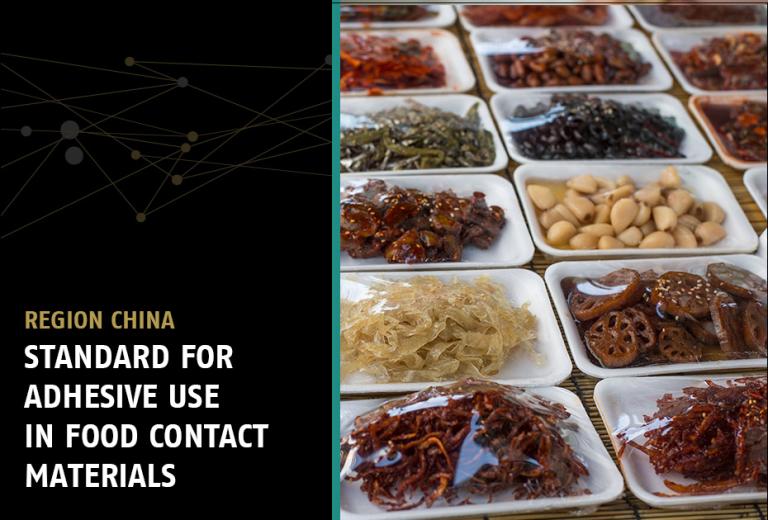China published first standard for adhesive use in food contact materials (FCM)
On March 12, 2024, the National Health Commission of China (NHC) has published the new GB 4806.15-2024 for adhesives used in food-contact materials and articles. This is the first time China has introduced a standard for adhesive use in food contact materials and articles.
Scope of standard
The standard applies to adhesive used in FCM. It covers adhesive directly or indirectly coming into contact with food through physical or chemical bonding.
General requirement
The general safety requirements from GB 4806.1 need to be considered.
For manufacturers, companies should control the safety risk of adhesive products during formulation design, raw material selection, and production processes, and ensure effective information transfer.
The user companies should control the safety risk originating from adhesives through packaging design such as seams and edges, by adding effective barrier layers, and control the curing process. Companies should also minimize the amount of adhesive used and no more than what is needed to achieve the desired effect.
Technical requirements
Raw materials and additives requirement
There are two annexes in this standard.
- Table A.1 of Annex A authorizes base materials (total of 51 substances) and sets use requirements for direct food contact adhesives.
- Table B.1 of Annex B authorizes base materials (total of 341 substances) and sets use requirements for indirect food contact adhesives. Monomers, starting materials, base polymers and other base materials listed in Table B.1 which are polymerized or otherwise formed with molecular weights greater than 1000 Da are also permitted to be used as base materials for indirect food contact adhesives and shall comply with the appropriate restrictive requirements.
Similar to the other standards for various food-contact materials and articles, the Adhesives Standard requires that additives within adhesives comply with GB 9685 and relevant announcements. Table A.5 of the above mentioned standard lists additives in adhesive and use requirements.
Sensory requirement and chemicals and physical requirements
The direct food contact adhesives should be tested for sensory requirements, overall migration, potassium permanganate consumption and heavy metals (as lead). The total migration of primary aromatic amines (PAA) is only applicable to adhesives that contain aromatic polyurethane and should be tested after the curing reaction. Their amount should be Not Detected (N.D., LOD: 0.01 mg/kg) out of the final product.
Labelling requirements
The labelling should comply with requirements of GB 4806.1. The adhesive products need to indicate the product category (i.e. “direct food-contact adhesive” or “indirect food-contact adhesive”).
How knoell can assist you
The Adhesives Standard will become effective on February 8, 2025, with a transition period of one year.
Adhesive manufacturers should ensure their products’ compliance and update their Declaration of Compliance (DoC).
User companies should request and obtain the latest version of the DoC, perform tests according to the product category (directly or indirectly contact) and update the DoC.
If you have questions related to Food contact compliance of adhesives or DoC preparation and review, contact the knoell FFCM team here.



